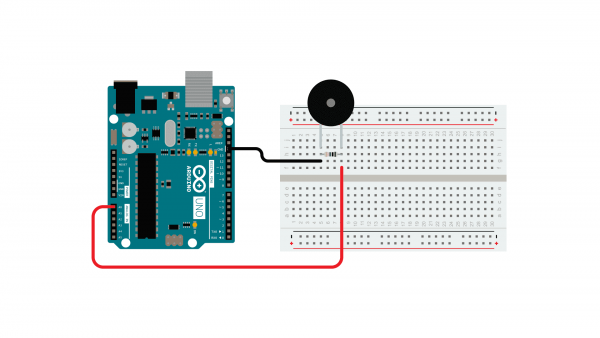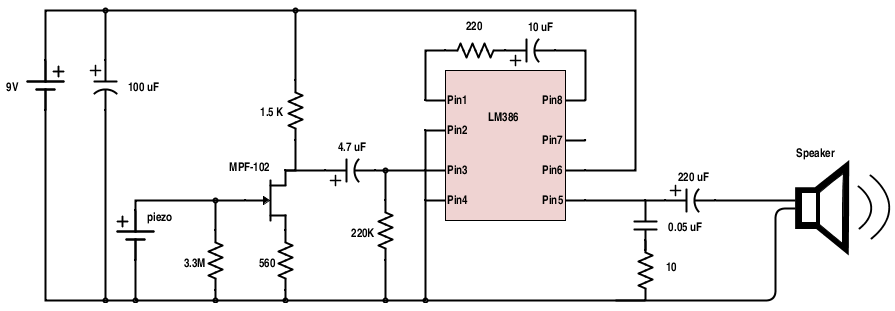Difference between revisions of "Using a piezo element as a contact mic"
Jump to navigation
Jump to search
(Created page with "If you want to record or amplify the sound vibraitons surface, rather than through air, you can use a piezo element as a contact mic.") |
|||
| (13 intermediate revisions by 2 users not shown) | |||
| Line 1: | Line 1: | ||
| − | If you want to record or amplify the sound | + | If you want to record or amplify the sound vibrations from a surface, you can use a piezo element as a contact mic. |
| + | |||
| + | [[File:piezo.png|600px]] | ||
| + | |||
| + | However, do not hook them up directly to other audio equipment! | ||
| + | There can be harmful high voltage spikes. | ||
| + | |||
| + | A simple and o.k. preamp to use is [http://makezine.com/2011/12/20/collins-lab-diy-contact-mic/ this one from collins lab] | ||
| + | |||
| + | If both sound quality and equipment safety is not your greatest concern, a very simple solution is [http://www.zachpoff.com/diy-resources/simple-contact-mike/ this one] | ||
| + | |||
| + | If you want to hook it up directly to a speaker: | ||
| + | |||
| + | [[File:Piezo&lm386.png]] | ||
| + | |||
| + | (The 220 resistor can be varied, for more or less gain. | ||
| + | The 3.3M can be replaced with a 1M resistor which is easier to find...) | ||
| + | |||
| + | [[Category:Sound]][[Category:Electronics]][[Category:Arduino]] | ||
Latest revision as of 11:45, 17 January 2023
If you want to record or amplify the sound vibrations from a surface, you can use a piezo element as a contact mic.
However, do not hook them up directly to other audio equipment! There can be harmful high voltage spikes.
A simple and o.k. preamp to use is this one from collins lab
If both sound quality and equipment safety is not your greatest concern, a very simple solution is this one
If you want to hook it up directly to a speaker:
(The 220 resistor can be varied, for more or less gain. The 3.3M can be replaced with a 1M resistor which is easier to find...)

